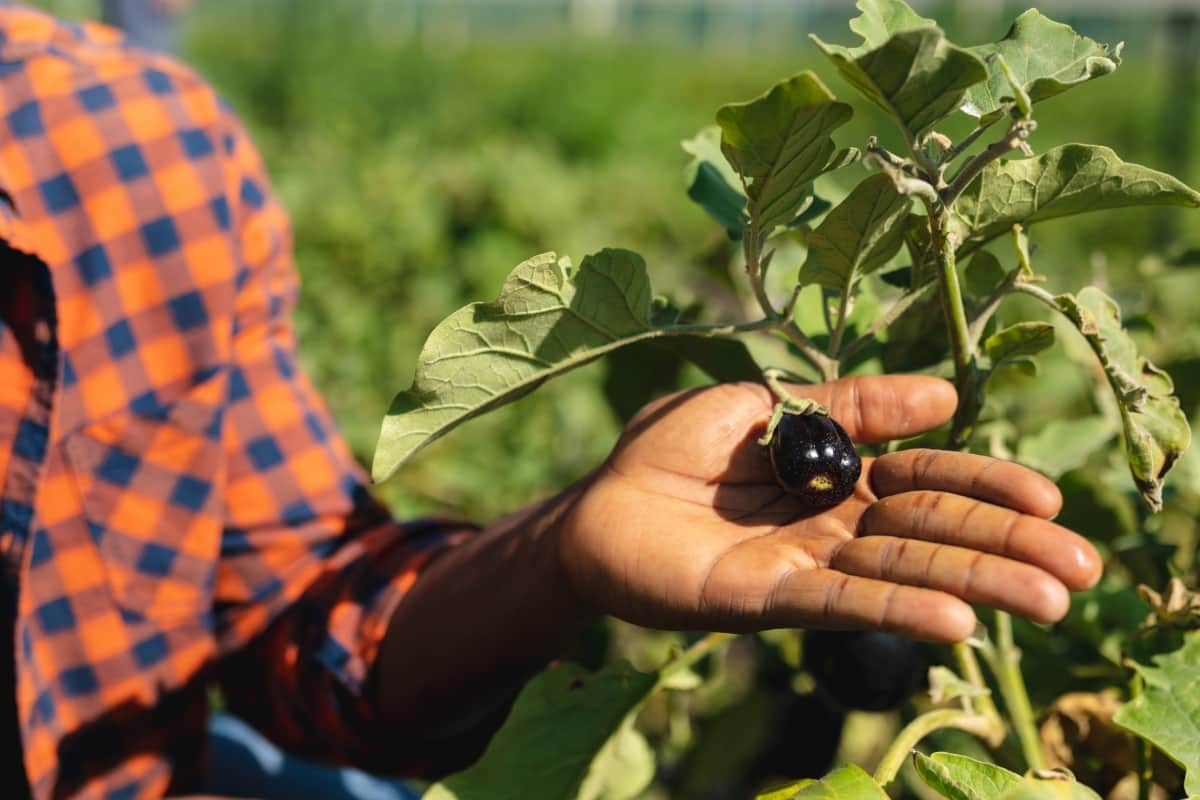Red soil is distinguished by its reddish color. This soil is also called Terra Rossa, which is Italian for “red earth.” Red soil is abundant in tropical and subtropical regions with warm and humid climates. Usually, it is fertile and conducive to agriculture. Weathering of rocks containing iron oxides produces red soil.

Red soil is mostly composed of basalt rock. The fertility of red soil is attributed to its high levels of organic matter and nutrients, including nitrogen, phosphorus, and potassium. Plant growth depends on these nutrients. Agriculture also benefits from red soil’s well-drained nature. Let’s check out the best crops for red soil below.
Features of Red Soil for Farming
- Clay content in red soil makes it a good soil for storing nutrients. A healthy crop grows in soil full of minerals and organic matter.
- The water-holding capacity of red soil is higher than that of other soil types. Drought-prone areas can benefit from this.
- Red soil has good drainage, so plants don’t get waterlogged. As a result, plants can take advantage of the moisture in the soil without getting waterlogged.
- Red soil contains a high concentration of iron, which is essential for healthy plant growth. A plant’s cell walls are strengthened by iron, which increases its ability to absorb nutrients.
- Plants can absorb nutrients and water more easily in red soil because of its good texture. As a result, plants remain healthy and yield well.
Best Crops for Red Soil
Grains
Grains grow well in red soil. Deep roots enable these crops to penetrate hard, clay-like soil. As well as iron and aluminum, the soil contains high nutrients that help strengthen and nourish the grains. Examples of grains suitable for red soil are:
| Cotton | Maize |
| Wheat | Barley |
| Rice | Sorghum |
| Pulses | Lentils |
| millet | Chickpeas |
| Tobacco | Peas |
| Oilseeds |
Vegetables
Vegetables can also be grown in red soil. Organic matter in the soil helps retain moisture and promote healthy root growth. Compost or manure can add nutrition to the soil, ensuring the best results. A successful harvest will also benefit from frequent watering and light fertilization. Examples of vegetables suitable for red soil are:
| Tomatoes | Sweet potatoes |
| Squash | Cucumbers |
| Eggplant | Squash |
| Peppers | Eggplant |
| Leafy Greens | Okra |
| Radishes | Beets |
| Potatoes |
In case you missed it: From Seed to Sale: The Comprehensive Guide to Creating an Organic Farming Business Plan in Denmark

Herbs
In a red soil environment, herbs are excellent choices. A few herb varieties thrive in the nutrient-rich conditions of red soil and are known to be very resilient. Their versatility makes them highly versatile and require little maintenance. Examples of herbs suitable for red soil are:
| Parsley | Oregano |
| Oregano | Sage |
| Basil | Lavender |
| Thyme | Chives |
| Rosemary | Cilantro |
Nuts
It is also possible to grow nuts in red soil. The nutrient-rich environment of red soil makes these nuts thrive, and they require minimal care. Harvested and used for culinary purposes, they add flavor and nutrients to dishes. They are also an excellent choice for a sustainable crop since they can be harvested year after year. Examples of nuts suitable for red soil are:
| Almonds | Macadamias |
| Pistachios | Cashews |
| Pecans | Chestnuts |
| Hazelnuts | Pine nuts |
| Pistachios | Coconuts |
Flowers
There are a variety of crops that can be grown on red soil, including flowers. Due to its high iron content, red soil is known for its fertility, making it an excellent place to grow flowers of all colors, shapes, and sizes. Daisies, roses, marigolds, chrysanthemums, lilies, trilliums, coneflowers, asters, and coneflowers are popular flowers for red soil.
In case you missed it: The Best Crops for Sandy Loam Soils: Maximizing Your Harvest

Fruits
It is also possible to grow pomegranates, apples, peaches, and plums on red soil. Warm, nutrient-rich soil is ideal for growing these fruits with a sweet aroma, a juicy texture, and beautiful colors. In particular, red soil is ideal for growing stone fruits, such as nectarines, peaches, and plums. For these fruits to thrive, red soil must be deep and well-drained.
Factors that Affect Crop Performance on Red Soil
- Soil pH: Growing crops in red soil requires a pH between 5.5 and 6.5. Crops may struggle to grow if the pH is too low or too high.
- Soil Texture: The texture of red soil is usually quite coarse, so choosing crops that can cope with it is essential. It is often possible to grow successful crops in red soil, including maize, wheat, and sorghum.
- Nutrient Availability: In red soil, nutrients are low, so fertilizers should be added to ensure the soil is nourished to allow crops to grow optimally.
- Water Availability: Since red soil is quite dry, it is important that crops have adequate water access to avoid drying out. It can be done through irrigation or by planting crops in areas that receive more rainfall.
- Temperature: In hot climates, red soil is often found, so it is important to choose crops that can tolerate the heat. It is possible to grow some crops in hot climates, such as sorghum.
- Weed Management: Weeds can grow quite easily in red soil, so it is important to keep them under control to avoid competing with crops. Weeding or herbicides can be used to accomplish this.
Advantages of Growing Crops on Red Soil
- Crops thrive in red soil because it is fertile and provides perfect growing conditions. For plants to grow, it contains a lot of iron oxide.
- Plants grow healthier and remain hydrated in red soil since it possesses a higher water-holding capacity.
- Many essential nutrients in red soil, including calcium, potassium, nitrogen, and magnesium, help plants grow and thrive.
- Many beneficial microorganisms thrive in red soil because it has a high pH.
- Due to its high clay content, red soil also prevents soil erosion.
- The high iron content of red soil makes plants resistant to fungal and bacterial diseases.
- Additionally, red soil improves soil fertility, which increases crop yields.
- As a result of the ideal environment provided by red soil, crops grow better and produce higher-quality yields.
Conclusion
Many types of crops can be grown on red soil. Several grain crops can be grown in this soil, including vegetables, fruits, and some grains. It is important that the soil is well-drained and has a pH between 5.5 and 6.5. Additional requirements include a high organic matter content and moderate nitrogen, phosphorus, and potassium levels. Compost, manure, or other organic amendments should be added to the soil for maximum productivity.
- Feed Your Flock for Less: Top 10 Tips to Save on Chicken Feed
- Ultimate Guide to Ossabaw Island Hog: Breeding, Raising, Diet, and Care
- Hatching Answers: The Top 10 Reasons Your Chickens Aren’t Laying Eggs
- Eggs and Economics: Breaking Down the Cost of Raising Backyard Chickens
- Defend Your Greens: Proven Methods to Keep Iguanas Out of Your Garden
- Ultimate Guide to Cinnamon Queen Chicken: A Comprehensive Guide for Beginners
- Ultimate Guide to California Tan Chicken: Breeding, Raising, Diet, Egg-Production and Care
- Ultimate Guide to Marsh Daisy Chicken: Breeding, Raising, Diet, and Care
- 10 Types of Chicken Farming Businesses You Can Start for Profits